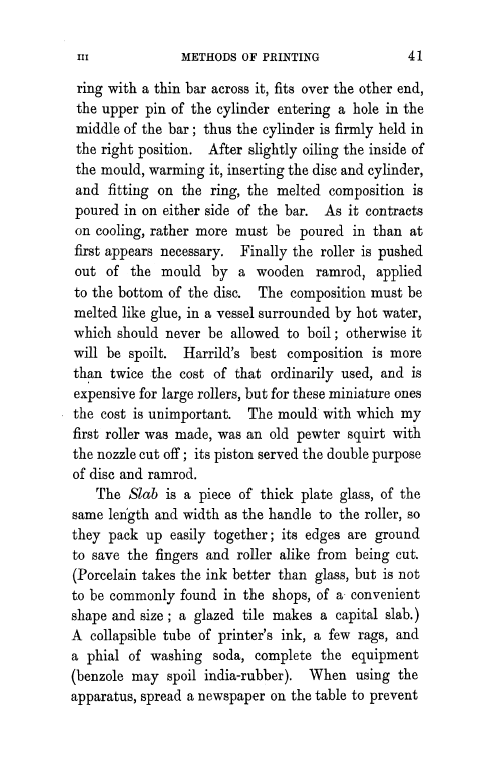III METHODS OF PRINTING
41
ring with a thin bar across it, fits over the other end, the upper pin of the cylinder entering a hole in the middle of the bar ; thus the cylinder is firmly held in the right position. After slightly oiling the inside of the mould, warming it, inserting the disc and cylinder, and fitting on the ring, the melted composition is poured in on either side of the bar. As it contracts on cooling, rather more must be poured in than at first appears necessary. Finally the roller is pushed out of the mould by a wooden ramrod, applied to the bottom of the disc. The composition must be melted like glue, in a vessel surrounded by hot water, which should never be allowed to boil ; otherwise it will be spoilt. Harrild's best composition is more than twice the cost of that ordinarily used, and is expensive for large rollers, but for these miniature ones the cost is unimportant. The mould with which my first roller was made, was an old pewter squirt with the nozzle cut off ; its piston served the double purpose of disc and ramrod.
The Slab is a piece of thick plate glass, of the same length and width as the handle to the roller, so they pack up easily together ; its edges are ground to save the fingers and roller alike from being cut. (Porcelain takes the ink better than glass, but is not to be commonly found in the shops, of a. convenient shape and size ; a glazed tile makes a capital slab.) A collapsible tube of printer's ink, a few rags, and a phial of washing soda, complete the equipment (benzole may spoil india-rubber). When using the apparatus, spread a newspaper on the table to prevent
